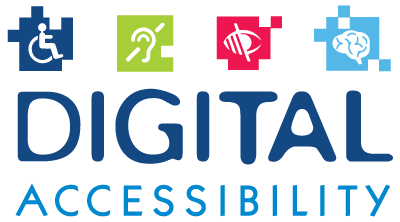The title of each Web page should:
The correct answer is “All of the above.” That means that the title of each webpage should be short, it should identify the subject of the web page and it should make sense when reading out of context. That is important especially for people who use screen readers for accessing the web.
Which physical controls should be available to use with a keyboard?
The correct answer is “All of the above.” That includes: bringing up context menus, form fields, drag and drop, selecting the text, resizing regions, links, menus, buttons, checkboxes, and radio buttons.
What makes a website’s navigation accessible (among others)?
The correct answer is “Pages should be organized according to headings.” All of the other answers contribute to the accessibility of the website, but they do not have an impact on website navigation.
What should be manually checked when assessing a website’s accessibility?
The correct answer is “If the content and tabbing are logically sequenced.”
Why should heading markup (e.g., ‹h1›, ‹h2›, ‹h3›, etc.) be used?
The correct answer is “To provide structure and organization to the webpage.” Heading markup will allow assistive technologies to present the heading status of text to a user.
If you would like to deepen your knowledge on Digital Accessibility, we invite you to enroll in one of our Certified training modules.
And don't forget to subscribe to newsletter, so we can keep you updated.
If you would like extend your knowledge on Digital Accessibility, we invite you to enroll in one of our Certified training modules.
And don't forget to subscribe to newsletter, so we can keep you updated.
If you would like to learn about Digital Accessibility, we invite you to enroll in one of our Certified training modules.
And don't forget to subscribe to newsletter, so we can keep you updated.
